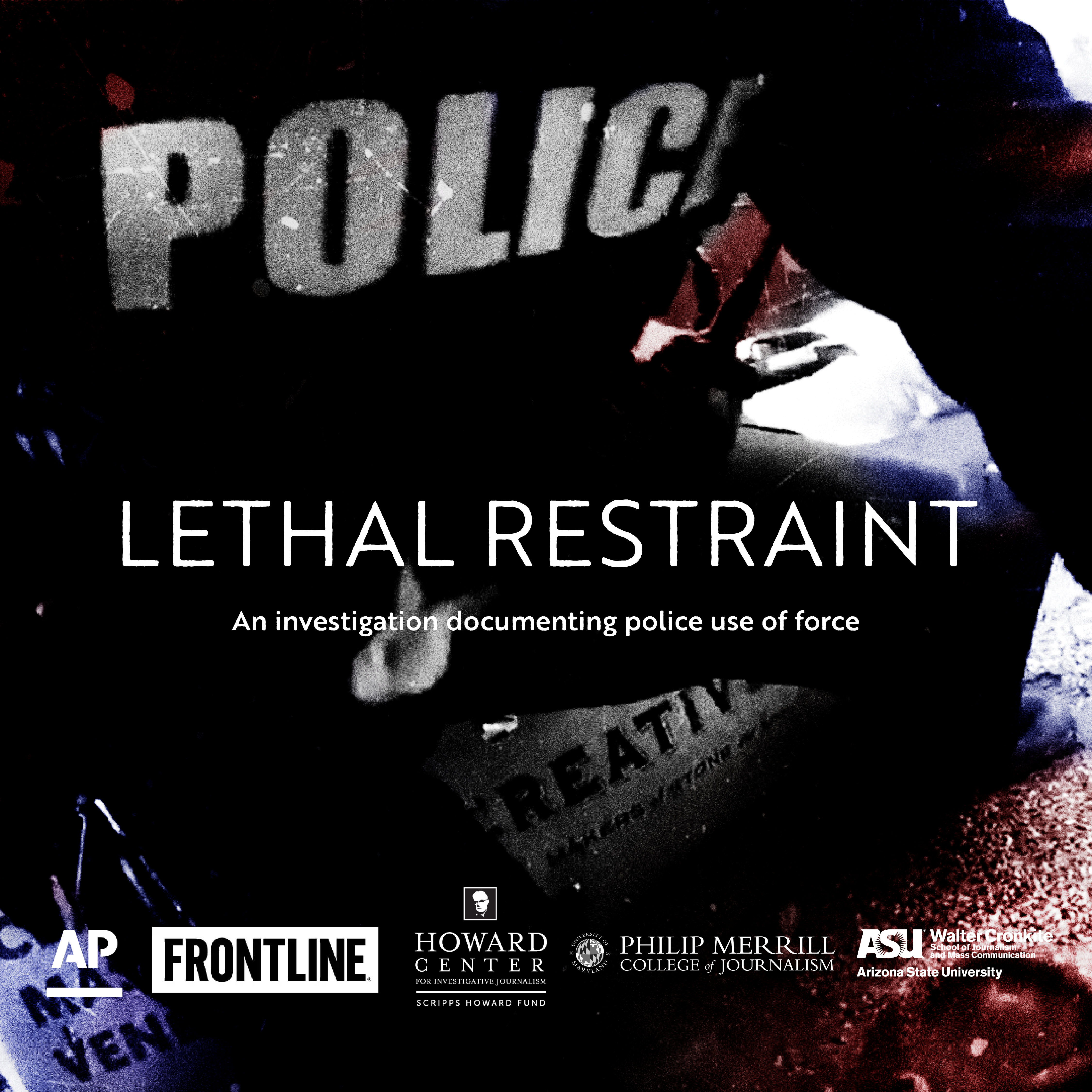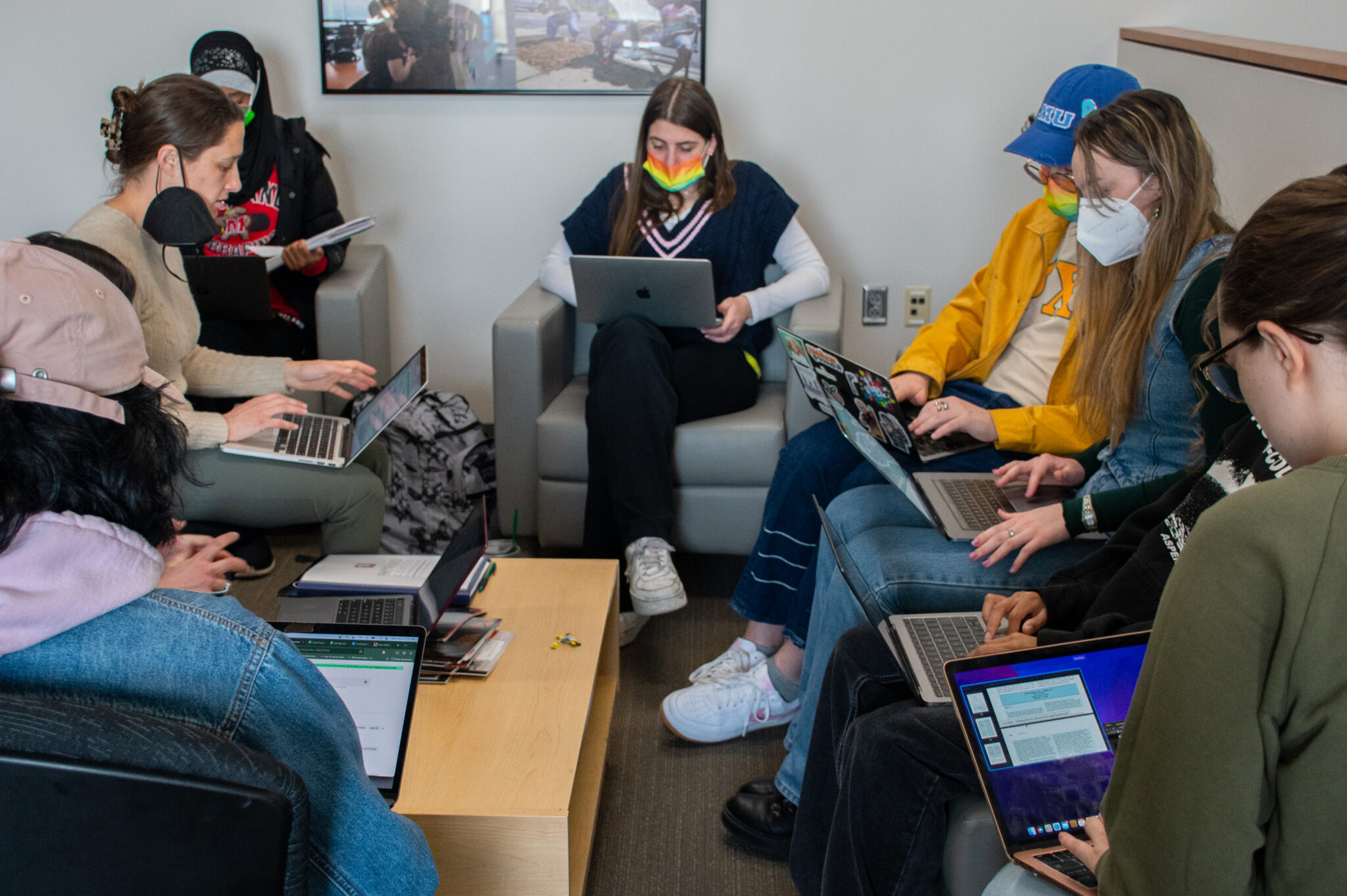COLLEGE PARK — The Associated Press global investigations team, the Howard Centers for Investigative Journalism at the University of Maryland and Arizona State University, and FRONTLINE (PBS) on Thursday began publishing “Lethal Restraint: An investigation documenting police use of force,” a project three years in the making.
 The investigation will continue rolling out over the next several months.
The investigation will continue rolling out over the next several months.
“Lethal Restraint” explores the question, “How many people die after police encounters involving force that is not supposed to be deadly?”
The team of AP journalists documented that police tactics intended to stop people without killing them — often in instances where people were unarmed and not a threat to public safety — resulted in 1,036 deaths in the U.S. from 2012-2021. Hundreds of the cases were a result of poor training or officers not following best safety practices.
“Absent our collaboration with the Howard Center at UMD, it’s hard to see how AP could have pulled off ‘Lethal Restraint’ — certainly not at the level we have,” said Justin Pritchard, an editor with AP’s global investigations team who led the project. “That’s how essential the students, staff and leadership have been. From the breadth of the database to the depth of its analysis, the work of the Howard Center permeates this investigation.”
The Howard Centers first teamed up with AP in spring 2022 to collaborate on the national investigation.
Led by Howard Center Director Kathy Best and Data Editor Sean Mussenden, a rotating team of data journalists at the University of Maryland worked closely with AP reporters and editors for two years. Through in-depth data analysis, the team helped AP reporters identify newsworthy patterns that helped shape AP’s reporting and produced findings for publication.
The team at the UMD Philip Merrill College of Journalism built custom software tools to make AP’s reporters more productive, allowing them to more easily surface relevant facts from a massive repository of digital documents. The team, building off early work by data journalists at Arizona State University, built a custom web application with thousands of distinct pages that integrated data collected by AP and the Howard Centers, digital text documents, video and other information.
"AP reporters and editors gave more than a dozen student data reporters at Merrill the opportunity to make a meaningful contribution to this important project, and the students made the most of it,” Mussenden said. “Through their work with the AP, they developed critical skills to prepare them for the professional world.”
Key findings of the investigation include that deadly encounters took place in nearly every state. The deceased lived not just in big cities, but also in suburbs and small towns.
White, Black, Hispanic, Asian, American Indian and Pacific Islander — no race or ethnicity was untouched. In sheer numbers, white people of non-Hispanic descent were the largest group, but deaths disproportionately affected Black people.
Nearly all were men. The oldest was 95. The youngest was just 15. Many of the deceased were experiencing a mental health or drug crisis.
- The most common location of the encounter was in or near their own home.
- The deceased came from all walks of life — a poet, a nurse, a saxophone player in a mariachi band, a truck driver, a sales director, a rodeo clown and even a few off-duty law enforcement officers.
- The federal government has struggled for years to count these deaths, and the little information it collects is often kept from the public and highly incomplete at best. No more than a third of the cases the AP identified are listed in federal mortality data as involving law enforcement at all.
- While not all cases involved excessive force, medical officials cited law enforcement as causing or contributing to about half of the deaths. In many others, significant police force went unmentioned and drugs or pre-existing health conditions were blamed instead.
- In 740 of the 1,036 cases, officers held the person in what is known as prone restraint, placing them facedown and, in some cases, applying pressure on their back.
- “I can’t breathe.” Police body cameras recorded those words in dozens of deaths reporters reviewed, from an Arizona parking lot to the front yard of a rural Georgia home.
- In some of the deaths, the narratives in police records and autopsy reports didn’t match what was captured on cameras or witnessed by bystanders.
- Police say they are often responding to volatile and sometimes violent situations, and deaths are rare.
The project involved 205 students, faculty and staff from Merrill College. More than 160 UMD students filed the nearly 7,000 requests for government documents and body-camera footage that fed the project’s master database.
 "This was the most ambitious collaboration the Howard Center has undertaken with a professional partner,” Best said. “Our students developed greater expertise in obtaining and analyzing public records for this project than many reporters develop in a lifetime.
"This was the most ambitious collaboration the Howard Center has undertaken with a professional partner,” Best said. “Our students developed greater expertise in obtaining and analyzing public records for this project than many reporters develop in a lifetime.
"We are so grateful for the trust AP put in our students, who got to see up close how an investigation of this magnitude takes shape."
The UMD Howard Center’s reporters zeroed in on Georgia, a state with a blend of urban and rural communities that has relatively good access to public records. Reporters examined details of the state’s 30 non-shooting deaths from 2012 through 2021 and interviewed dozens of law enforcement officials, family members and lawyers to understand how those deaths occurred. The resulting stories will be published in April.
The project includes a dynamic visual story, an interactive database, multiple traditional stories and an upcoming FRONTLINE documentary scheduled to premiere April 30 on PBS and stream online at pbs.org/frontline, YouTube and in the PBS App. In addition to the AP site for "Lethal Restraint," Merrill College's Capital News Service published a site to host the project.
“This investigation took three years in the making and delivers the most expansive tally of restraint-related deaths nationwide,” said Ron Nixon, AP’s vice president for investigative, enterprise, grants and partnerships. “We are pleased to collaborate with FRONTLINE and the Howard Centers for Investigative Journalism to deliver this important investigation delving into police restraint and its lack of accountability in the United States.”
The UMD Howard Center’s work was supported by the Scripps Howard Fund and the Park Foundation.
About the Howard Center
The Howard Center for Investigative Journalism, launched in 2019 and funded by the Scripps Howard Fund, gives Merrill College students the opportunity to work with news organizations across the country to report stories of national or international importance to the public.
The multidisciplinary program is focused on training the next generation of reporters through hands-on investigative journalism projects. Students will learn to dive deep into data, ask tough questions of those in power and tell the stories they uncover in new and compelling ways.
For more information, contact:
Josh Land
joshland@umd.edu
301-405-1321
